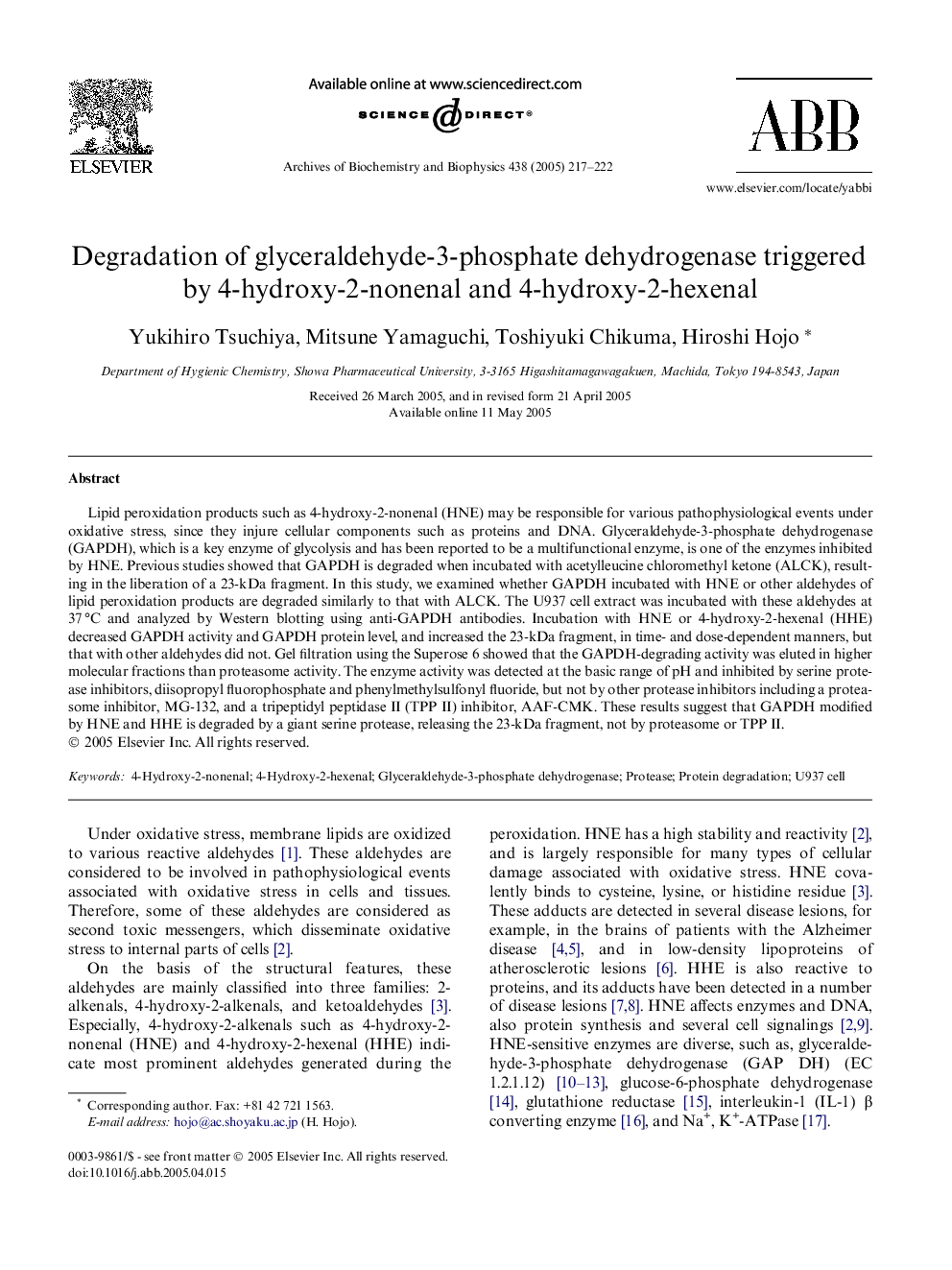| Article ID | Journal | Published Year | Pages | File Type |
|---|---|---|---|---|
| 9882199 | Archives of Biochemistry and Biophysics | 2005 | 6 Pages |
Abstract
Lipid peroxidation products such as 4-hydroxy-2-nonenal (HNE) may be responsible for various pathophysiological events under oxidative stress, since they injure cellular components such as proteins and DNA. Glyceraldehyde-3-phosphate dehydrogenase (GAPDH), which is a key enzyme of glycolysis and has been reported to be a multifunctional enzyme, is one of the enzymes inhibited by HNE. Previous studies showed that GAPDH is degraded when incubated with acetylleucine chloromethyl ketone (ALCK), resulting in the liberation of a 23-kDa fragment. In this study, we examined whether GAPDH incubated with HNE or other aldehydes of lipid peroxidation products are degraded similarly to that with ALCK. The U937 cell extract was incubated with these aldehydes at 37 °C and analyzed by Western blotting using anti-GAPDH antibodies. Incubation with HNE or 4-hydroxy-2-hexenal (HHE) decreased GAPDH activity and GAPDH protein level, and increased the 23-kDa fragment, in time- and dose-dependent manners, but that with other aldehydes did not. Gel filtration using the Superose 6 showed that the GAPDH-degrading activity was eluted in higher molecular fractions than proteasome activity. The enzyme activity was detected at the basic range of pH and inhibited by serine protease inhibitors, diisopropyl fluorophosphate and phenylmethylsulfonyl fluoride, but not by other protease inhibitors including a proteasome inhibitor, MG-132, and a tripeptidyl peptidase II (TPP II) inhibitor, AAF-CMK. These results suggest that GAPDH modified by HNE and HHE is degraded by a giant serine protease, releasing the 23-kDa fragment, not by proteasome or TPP II.
Keywords
Related Topics
Life Sciences
Biochemistry, Genetics and Molecular Biology
Biochemistry
Authors
Yukihiro Tsuchiya, Mitsune Yamaguchi, Toshiyuki Chikuma, Hiroshi Hojo,
